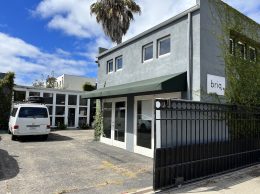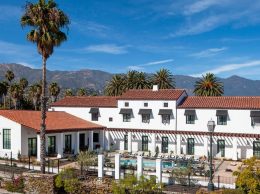Chip company launches cell spinoff in Santa Barbara
IN THIS ARTICLE
- Technology Topic
- Stephen Nellis Author
By Stephen Nellis Friday, February 17th, 2012
A new life sciences company could help researchers sort out cells better and faster, a potential breakthrough in the treatment of cancer, diabetes and stroke. Santa Barbara-based Owl Biomedical was founded last year and has raised about $6 million in capital so far. It is being headed by John Foster, the founder and former chief executive of Innovative Micro Technologies, or IMT, which Owl was spun out of.
The heart of Owl is a chip that can sort millions of cells per minute with help from lasers and nano-scale valves. With help from Owl’s machine, scientists could one day sort out the very tiny fraction of a patient’s cells that are effective at fighting a cancer, grow a large number of those cells and then re-inject them into the patient.
Owl retains close ties to IMT, which is one of a handful of firms that fabricate semiconductors on the South Coast. Both are in the space of micro electromechanical devices — essentially, tiny little machines like pumps and levers built on a microchip.
Owl licenses the technology from IMT, and IMT makes the chips that drive the system. For its part, Owl integrates the chips into complete system that includes sterile disposable cartridges that would let scientists work with materials such as blood or bone marrow and inject it into patients, along with a machine that lets the researchers decide which types of cells they want to sort.
“Forever, people have been trying to separate cells from other cells in the body,” Foster told the Business Times. “We separate very specific cells. We can do that sterilely, safely and at high speed without damaging any cells — which is sort of the cat’s meow for this business of sorting cells.”
Cell sorting itself is nothing new. It is mostly performed with a process called fluorescence-activated cell sorting — that is, cells are dosed with markers, and when a laser at a certain wavelength of light is beamed on them, they emit back, or fluoresce, a known wavelength of light.
What Owl adds is a superfast valve that can open almost instantly when a target cell is detected and siphon it off to a holding area for later use. The valve is faster than the valves in a Ferrari engine.
“As far as we know, that valve is the fastest in the world — it moves from one position to another in 15 millionths of a second,” Foster said. “With this ultra-high-speed valve, we can pick off one cell at a time. In a way, it’s the mechanical engineering way of doing biology — it’s how a bunch of mechanical engineers would attack this problem.”
The company has sold two machines so far, one of them to the Fred Hutchinson Cancer Research Center in Seattle. Researchers there are pioneering a method of separating out T-cells in patients with certain kinds of cancers that have spread.
Overall, the T-cells don’t know how to fight the cancer, but scientists can “teach” a few of them to do so. Cell sorting can isolate the “properly educated” cells for replication, Foster said. “You’re supercharging the patient with their own T-cells to fight off their cancer, but you’ve given them a big hand,” he said.
One advantage of the Owl approach is that even though the chips are extremely advanced technology, once they are designed and perfected, 3,200 of them can fit on each 150-millimeter silicon wafer. They can scale like smartphones, potentially helping millions of patients.
“In this facility I’m sitting in right here in Santa Barbara, we could make 100 million chips a year without even breathing hard,” Foster said.
Owl has various layers of approval to seek before its devices are in everyday clinical use. But Foster said the company has world-wide aspirations. “We are targeting this to become an international company, headquartered here in Santa Barbara,” Foster said. “People are sick everywhere in the world, not just the United States.”












